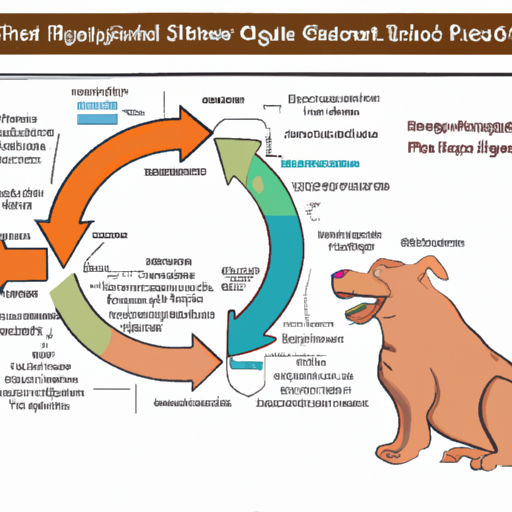Understanding the Anatomy of a Dog’s Stomach
As a caregiver, it’s crucial to understand your pet’s anatomy to better recognize signs of distress. Just like humans, dogs have a complex digestive system. Their stomachs are slightly elongated and rest on the left side of their abdomen. This position makes the stomach prone to rotation, or ‘flipping’, a serious condition also known as Gastric Dilatation-Volvulus (GDV).
Recognizing the Signs of a Flipped Stomach
You’re the first line of defense in your dog’s health. Recognizing the signs of a flipped stomach can be a matter of life and death. Symptoms include:
- Excessive drooling
- Restlessness or discomfort
- Abdominal swelling
- Non-productive attempts to vomit
If you notice these signs, seek veterinary care immediately.
What Causes a Dog’s Stomach to Flip
The exact causes of a dog’s stomach flip are not fully understood. However, several factors can increase the risk:
- Breed: Larger breeds with deep chests, like Great Danes or St. Bernards, are predisposed.
- Age: Older dogs are more susceptible.
- Eating habits: Rapid eating, one large meal a day, or eating and drinking large amounts before or after exercise can contribute.
These factors combine in a perfect storm, causing the stomach to fill with gas and flip.
Preventative Measures and Treatment
Understanding the risk factors allows you to take preventative measures. Consider the following:
- Feed your dog smaller, more frequent meals.
- Avoid vigorous exercise around feeding times.
- Encourage slow eating by using a slow-feeder bowl.
If your dog’s stomach does flip, immediate surgical intervention is required. The procedure, called a gastropexy, repositions and secures the stomach to prevent future occurrences.
The Importance of Immediate Action
With a flipped stomach, every second counts. The longer the stomach remains twisted, the greater the risk of complications, including organ damage and death. As a caretaker, your swift action to get your dog to a veterinary hospital can save their life.
Frequently Asked Questions
1. Can a dog’s stomach flip from running after eating?
While not the sole cause, vigorous exercise after eating can contribute to a stomach flip.
2. Are certain dog breeds more susceptible to stomach flipping?
Yes, larger breeds with deep chests, like Great Danes or St. Bernards, are more predisposed.
3. Can a dog survive a stomach flip without surgery?
No, immediate surgical intervention is crucial for survival.
4. What can I do to prevent my dog’s stomach from flipping?
Regular, smaller meals and avoiding vigorous exercise around feeding times can help reduce the risk.
5. Can a flipped stomach happen to puppies?
While more common in older dogs, it can occur in puppies, especially those of larger breeds.



